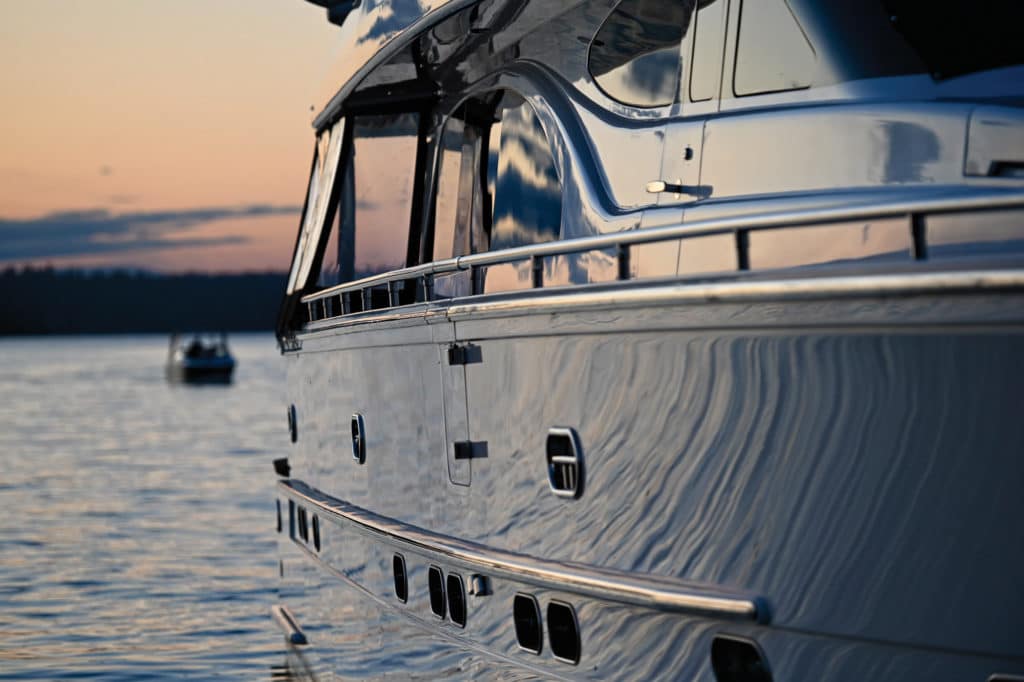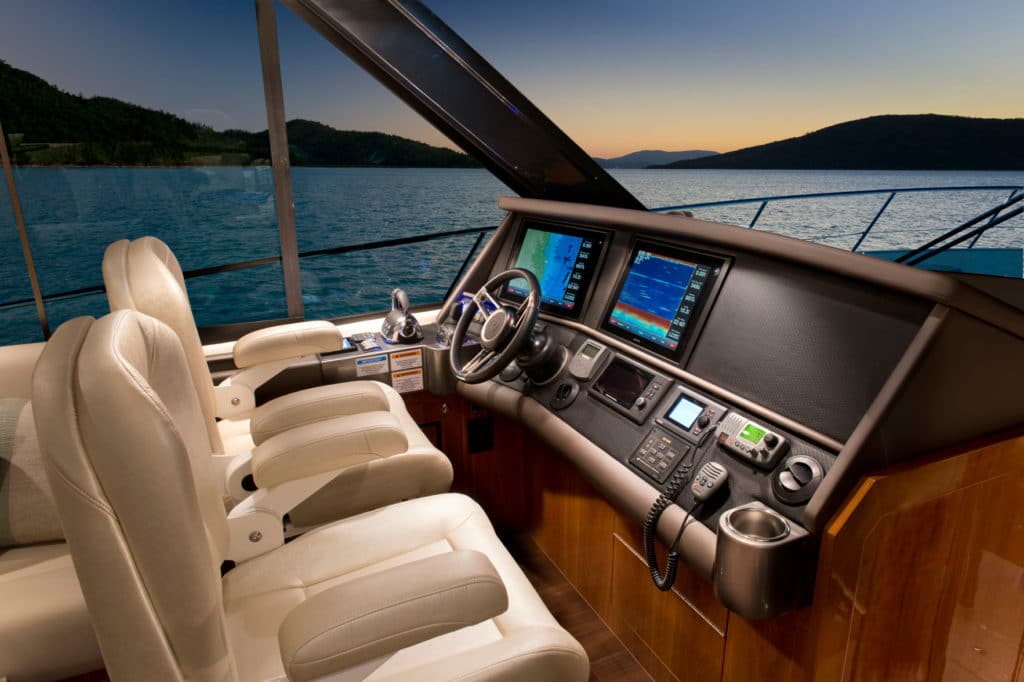
Hindsight has ways of revealing genius—or at least seriously good luck. Well-known examples include buying Apple, Google or Microsoft IPO stock; buying real estate two or three decades ago; and given the lack of inventory and the build times these days, taking delivery of (and sea-trialing) one’s dream yacht in mid-2019. Shy of this last feat, today’s smart money is often on finding a high-quality brokerage yacht and refitting it to modern electronics standards.
Take, for example, a 75-footer that was recently refitted at Seattle’s S3 Maritime. The yacht arrived with a 10-year-old marine-electronics system that was functional. It left with a fully modern networked system that included three 24-inch touchscreen multifunction displays that formed a contemporary glass-bridge helm. Better still, the owner enjoyed the cruising season, rather than waiting for a new whip to arrive.
Many boaters have been far less lucky. When the pandemic first hit, few could have predicted the spike in new- and brokerage-boat sales that followed. While this boom is great news for the marine industry as a whole, a corollary effect is that wait times for new builds are now sometimes measured in years.
Greg Allen, the sales manager of S3 Maritime, and Larry Schildwachter, the owner of Emerald Harbor Marine in Seattle, are now offering suggestions to savvy yacht-buying customers about navigating the brokerage market with upgrades in mind, a strategy they’re seeing more customers than usual embrace.
“Any nice boat that’s for sale is sold within days. When pedigree trawlers hit the docks, people are waiting to buy them,” Schildwachter says. “If the radars are old but the bulkheads are clean, we encourage owners to buy them [because these boats] are excellent candidates for refits. The red flags are when we see cheap [or poorly installed] gear on a pedigree boat.”
Allen says that most brokerage yachts arriving at his shop for refit work are typically five to 15 years old. “Most have original equipment,” he says, adding that some of these yachts have been previously refitted. “Most owners want to incorporate new electronics for ease of use and safety.”
Not surprisingly, the depth of an electronics-refit job is often proportional to the vintage of the yacht’s existing equipment.
“If the radar is digital and the owner wants to stay with the same manufacturer, then we might save [it],” Allen says, adding that owners of helms that are 10 to 15 years old need to approach the project as a clean sheet of paper. “Everything is removed. The radars are analog, so they [won’t] work with any current technology. Autopilots aren’t adaptive, and sounders don’t have any of the current technology.”

In addition to compatibility issues, older electronics aren’t known for having intuitive user interfaces. That has changed, as have the collision-avoidance capabilities of contemporary technology.
“AIS takes the guesswork out of radar,” Schildwachter says, referring to the automatic identification system. “Most people do just fine with Class B transponders.” (Class A AIS transponders are more expensive, have different user responsibilities and requirements, and are only really necessary for fast boats that require fast reporting rates.)
While good AIS should be part of any refit project, Allen says Doppler-enabled digital radars are the technology du jour. Proprietary color-coding systems can now differentiate dangerous radar targets from benign ones for at-a-glance navigation.
“Their power has increased, and resolution is amazing, especially close to the vessel,” he says.
Satellite compasses are another technology that Allen encourages owners to incorporate into refit projects.
“GPS heading sensors have come down in price significantly,” he says, adding that the accuracy of a navigation system’s radar overlay hinges on the quality of its heading-sensor data. “A GPS heading sensor isn’t affected by deviation or variation [issues] and will be accurate anywhere you go.”
Almost all electronics overhauls involve new multifunction displays, through which all networked vessel data is run and on whose screens data from downstream devices (AIS, radar, sonar) is displayed. Today’s displays also let skippers monitor third-party systems, control stereos, as well as operate digital switching.
Here, old-school advice still stands: Buy the biggest screens you can afford that fit at the boat’s helm.
While Schildwachter stresses that it’s the job of a good marine-electronics shop to consider a customer’s goals and itinerary before drafting purchase orders for a helm refit, he and Allen agree that there’s a right time to order equipment, especially with back orders caused by the pandemic.
“We’re ordering parts and having to wait three to five months,” Allen says (as of September). “All of the manufacturers have been affected by supply-chain delays. My recommendation is: If someone is thinking about an electronics upgrade, order the parts now.”
This advice is a departure from traditional wisdom, which held that savvy refit customers should wait until the technicians were practically ready to install sensors and screens before ordering electronics, to ensure the latest-generation equipment.
Given that all customers are braving this same market climate, there’s no real downside to finalizing and placing an order sooner rather than later, provided that you and your shop have carefully evaluated the brokerage yacht and planned its refit.
The upside, of course, is an upcoming summer of cruising with family and friends aboard your new-to-you ride.
Retirement Age
Determining when marine electronics are “old” often hinges on the manufacturer. “Are parts still available?” asks Larry Schildwachter at Emerald Harbor Marine. “After six or seven years, parts are usually lean.” While this doesn’t greatly matter if everything works and the itinerary is local, he suggests that the definition changes for anyone with bluewater ambitions.








